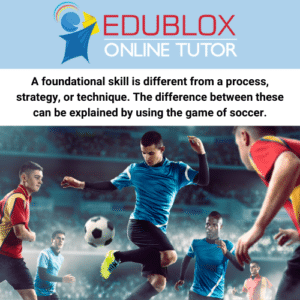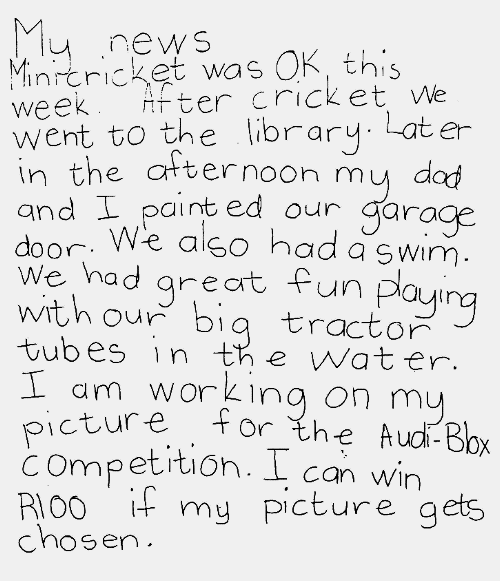
‘Learning difficulties’ is often the first descriptive term used when a child has trouble in school. In some countries, it is also a synonym for ‘learning disabilities’. However, learning difficulties and learning disabilities are usually distinguished, with learning difficulties being the broader term.
Any person may experience a learning difficulty between mild and severe, caused by internal or external factors, and may or may not be an expected consequence of the person’s potential.
Whenever a child is formally diagnosed with a learning disability in the U.S., they become the state’s financial responsibility. These children, who are provided with educational programs under federal law, are in most states distinguished from other children with learning difficulties on two grounds:
- The basis of their academic problems is presumed to be due to some neurological dysfunction. The learning disabilities category excludes children with learning difficulties due to visual, hearing, or motor handicaps, an intellectual disability, emotional disturbance, or environmental, cultural, or economic disadvantage.
. - To be diagnosed as learning disabled, there must often be a discrepancy between a child’s potential and their achievement.
.
How the discrepancy model works
The discrepancy model was part of the Individuals with Disabilities in Education Act (IDEA) when it became law in 1975. For decades, schools were required to use the discrepancy model. However, in 2004 the law changed, stating that states can use the discrepancy model if they choose. Thirty-nine states still allow their school districts to use the discrepancy model. Eleven states forbid its use.
Usually, a 50 percent discrepancy formula is used as a criterion for identification. A 50 percent discrepancy means that a child achieves only half as well as one would expect from him when considering his potential.
One implication of a 50 percent discrepancy is that a child of average intelligence has to spend two years at school before a one-year discrepancy (50 percent) can be calculated and the child can receive treatment. This situation has resulted in the IQ-achievement approach being labeled a “wait-to-fail” model (Hallahan, Kauffman, & Pullen, 2015).
The RTI approach
In the discrepancy model’s place, policymakers have proposed what is referred to as a response to intervention (RTI) approach.
RTI usually consists of three tiers of instruction. Tier 1 is typical instruction (with the important provision that it be evidence-based) delivered in the general education classroom. Students not doing well in Tier 1 are provided more intensive instruction in small groups several times a week (Tier 2). Those still struggling following Tier 2 interventions are referred for special education evaluation, with special education being Tier 3.
Learning difficulties, whether they represent a learning disability or not, should always be addressed. They should receive attention while they are simply learning difficulties, before they have a chance to start an adverse chain reaction that can include broad educational, social, personal, emotional, and family issues.
Understanding learning disabilities
Types of learning disabilities include dyslexia, dysgraphia, dyscalculia, language processing disorder, visual processing disorder, auditory processing disorder, and nonverbal learning disability. Overcoming learning disabilities — or learning difficulties — is only possible when we understand that learning is a stratified process.
A simple example, which illustrates the stratified nature of learning, is the fact that one has to learn to count before it becomes possible to learn to add and subtract. Suppose one tried to teach a child who had not yet learned to count to add and subtract. This would be quite impossible, and no amount of effort would ever succeed in teaching the child these skills.
The child must first learn to count, and only then does it become possible for him to learn to add and subtract. In the same way, there are things that a child must learn first, and only then does it become possible for him to learn to read, spell, write, do mathematics, et cetera.

Learning disabilities expert Bartoli, who says it is “the actual practice with the real task of reading that leads to more skillful reading,” is only partially correct. “Of course,” she adds, “any soccer, tennis, or basketball coach will tell you the same thing: If you want to get better, you have to play the game — not just practice skill drills.”
I know very little about tennis and basketball, but I do know about soccer. The game of soccer consists of many fragmented elements or skills — passing, control, shooting, dribbling, goalkeeping, and heading. Therefore, before any child is expected to play in a full-game situation, they are first trained to pass, control, dribble, and shoot the ball. In fact, until these foundational skills have been automatized, the child will have two left feet on the soccer field. The same applies to reading, spelling, writing, math, and learning as such.
Overcoming learning disabilities
Edublox offers cognitive training to develop and automatize the foundational skills of reading, spelling, writing, mathematics, and the skills needed to learn subject matter.
A foundational skill is different from a process, strategy, or technique. The difference between these can be explained by again using the game of soccer. To be a soccer player, one must first master the foundational skills, e.g., passing and dribbling the ball. A technique such as the “wall pass” should only be taught after a player has adequately mastered the skill of passing the ball. As stated in Knowabout Soccer, “No matter how good your passing technique, if the quality of your passing is poor, your technique will not be effective.”
Foundational learning skills include:
- focused, sustained, and divided attention
- visual, auditory, and phonological processing;
- processing speed and rapid naming;
- visual and auditory memory; short-term, long-term, and working memory
- logical reasoning
.
Edublox aims to develop and automatize these foundational skills, integrating this with reading or math tutoring. While Edublox is not a quick fix, its use can permanently alleviate the symptoms of learning disabilities and learning difficulties.
A boy who overcame learning disabilities
Edublox helped Peter Brett*, who experienced significant problems with reading, spelling, phonics, and creative writing, to overcome his learning difficulties. His concentration was poor, as well as his memory. His work tempo was slow, and his handwriting was untidy. He was timid and reserved, with no confidence to express himself in front of others. He didn’t enjoy school.
During Peter’s first year in second grade, he received remedial help. Two months before the end of the school year, his parents were not satisfied with his progress and started Peter on Edublox. As is sometimes the case, progress in the initial stages was slow and, according to his mother, sometimes discouraging. Peter failed second grade.
With much perseverance, noticeable improvement started showing the following year. Peter’s mother reported that his reading became more fluent and correct, and his spelling and creative writing improved remarkably. In addition, his handwriting and neatness improved to the extent that he received an award at year-end ceremonies. According to his teacher, “Peter has made the best progress of any of the students I had repeating second grade in my class.”
The improvement in Peter’s school report says it all:
| TERM 4: 2ND GRADE | TERM 4: 2ND GRADE (REPEAT) | |
| ENGLISH | ||
| Oral | B | A |
| Reading | D | B+ |
| Phonics | D | B+ |
| Creative writing | D | B+ |
| SECOND LANGUAGE | C | B+ |
| MATHEMATICS | C+ | B+ |
| HANDWRITING | C+ | A |
For Peter’s mother, his most delightful improvement was his self-confidence. Once a boy without confidence, he has now played one of the leading roles in his school’s second-grade concert. He came second in the Speech and Drama Contest and was asked to give his speech again at year-end ceremonies in front of a large audience.
An example of Peter’s schoolwork just after he started Edublox, and another example after fifteen months, are presented below.
.

just after he started Edublox.

15 months after starting Edublox.
Read more stories and watch videos of children overcoming learning disabilities like dyslexia, dyscalculia, and dysgraphia.
.
Edublox offers live online tutoring to students with learning disabilities and learning difficulties. Our students are in the United States, Canada, Australia, and elsewhere. Book a free consultation to discuss your child’s learning needs.
.
.
.
* Not his real name.

